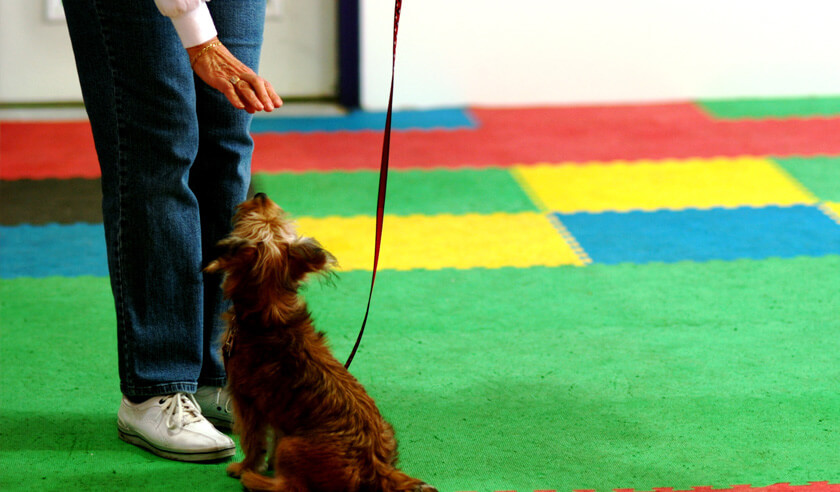The intelligence of dogs is quite intriguing to researchers, with many books and articles written about how smart different dog breeds are. Dogs are incredibly intelligent, able to learn hundreds of words and cues, and have even shown the ability to count.1 They’re quite amazing, and their intellectual abilities are on par with a human toddler. But are they all the same? What are the most intelligent dog breeds?
The Right Dog for the Job
You may want to add a dog to your life who will excel in certain training or sports. If so, they need the brain to go with it. Or perhaps you’re looking to avoid a dog who may outsmart you (very intelligent dogs can actually be more difficult as pets). What’s most important is understanding that there are different kinds of intelligence when it comes to dogs.
Willingness to learn and perform are important factors to consider when measuring a dog’s intelligence. Independent breeds, such as livestock guardian dogs and ancient breeds, tend to deliberate whether to follow a trained cue or their natural instincts, often choosing their instinctive intelligence over obedience.
The intelligence of dogs can be complex, but a straightforward explanation is defined by three different aspects, as theorized by professor of canine psychology, Stanley Coren.2
Instinctive Intelligence
Every dog breed was developed for a particular job or purpose. These breed-based smarts are called instinctive intelligence. A terrier is likely to excel at finding and catching vermin while a herding breed is going to figure out the best way to herd and move livestock. Both are quite tenacious in doing so.
Adaptive Intelligence
A dog’s ability to problem-solve by learning from their environment is called adaptive intelligence.
A breed that’s historically more independent, such as the Siberian Husky, is likely to solve problems that arise without much input from a person, while a dog bred to work cooperatively with people, like the Labrador Retriever, might seek out help from someone to solve their problem.
Working and Obedience Intelligence
Working and obedience intelligence measures how well a dog learns what we teach them, such as training skills, tricks, and word associations. We can track how many cues a dog responds to, but this often places dogs bred to work closely with people — the less independent breeds — at the top of the list.
Most Intelligent Dog Breeds
No matter their size, these canines need high levels of enrichment throughout the day, both for mental and physical stimulation.
Border Collie
This breed is a workhorse that requires constant mental exercise to keep their brain engaged. Bred to herd and move livestock, they are incredibly fast and agile, making them a top choice for those looking to participate in agility. Border Collies are known for their intense eye contact, known as the “herding gaze.” When training a new command, this breed needs little repetition and often understands something on the first try.
Poodle
The Standard Poodle historically started as a gun dog, helping to retrieve waterfowl, but have worked in a variety of jobs since they first appeared as a dog breed. Miniature and Toy Poodles were bred down from the original Standard Poodle and possess the same intelligence, just in smaller packages.
Each variation is highly capable of learning a variety of tricks and commands and love to please their people. Poodles need little repetition when learning something new and often understand a new command on the first try.
German Shepherd
Bred originally as a herding dog, German Shepherds are incredibly intelligent and trainable. Over the years, their jobs have included search and rescue, law enforcement, and military work. They bond closely with their people and are eager to please, increasing their trainability. As one of the smartest large dog breeds, GSDs can understand a new command in as few as five repetitions.
Golden Retriever
As a gun dog, a Golden Retriever would wait for their person’s signal and then retrieve waterfowl during hunts. Not only are these dogs incredibly smart, but they also tend to be very sociable and outgoing. Golden Retrievers are commonly seen in obedience competitions as they love to work with their person. They’re quick to pick up new commands, making them easy to train.
Doberman Pinscher
When originally developed, Dobermans were bred for protectiveness, stamina, and intelligence. True to their origins, Doberman Pinschers have remained a popular protective breed today. Due to their protective nature and proximity to people, Dobermans rank as one of the most intelligent breeds in terms of working and obedience. Their devotion to their person makes them biddable and fun to train.
Shetland Sheepdog
As their name implies, Shetland Sheepdogs were originally bred to herd sheep. Their small size and thick coat helped them survive harsh conditions while excelling at their job. As one of the most intelligent dog breeds, Shelties need very little time or repetition to learn a new command or trick, often getting it right on the first try. This breed does well in agility and obedience competitions because they love working closely with their person.
Papillon
With their origins as a companion dog, Papillons do not have the same working background as their intelligent counterparts. Their proximity to people may be to credit for their ability to learn quickly. These little dogs have more energy than most toy breeds and are incredibly extroverted. With their nimble build, they excel at agility. They are excellent trick dog performers and need consistent enrichment to stay busy.
Pembroke Welsh Corgi
This small but mighty herding breed is a descendant of northern European spitz-type dogs with lots of energy and a need for speed. Not only are Pembrokes great problem-solvers, but they love to perform for their people, making them an excellent choice for agility or obedience competitions.
Despite similarities to the Cardigan Welsh Corgi, they are two separate breeds. Both are of similar intelligence, but Pembrokes tend to be responsive and eager as compared to the Cardigan’s more reserved nature.
Miniature and Standard Schnauzer
Both the Miniature and Standard Schnauzer breeds are some of the smartest working dogs around. Both have a penchant for herding and ratting. The Miniature Schnauzer was developed from the Standard Schnauzer in the mid-19th century. Both excel at other farm dog tasks and at being an excellent companion dog. Learning new things may take either breed between five and 15 repetitions to get right.
The Giant Schnauzer is also among the most intelligent dog breeds, but a bit lower on the list than their other Schnauzer counterparts.
If you’re planning on adopting a dog, think about what you’re looking for in a dog and the job you’ll be giving them. Set yourself and your dog up for success by meeting their instinctual needs, creating a conducive environment for their learning, and investing in the right type of training for them. Then you’ll both thrive together!
ZPC-03990
1. Lauren S. Aulet et. al. Canine sense of quantity: evidence for numerical ratio-dependent activation in parietotemporal cortex. The Royal Society Publishing. December 18, 2019.
2. Coren, S. (1994). The Intelligence of Dogs: A Guide to the Thoughts, Emotions, and Inner Lives of Our Canine Companions. Simon and Schuster.





